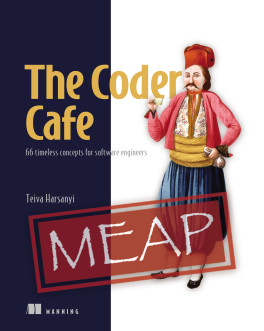pro $24.99 per month
- access to all Manning books, MEAPs, liveVideos, liveProjects, and audiobooks!
- choose one free eBook per month to keep
- exclusive 50% discount on all purchases
- renews monthly, pause or cancel renewal anytime
lite $19.99 per month
- access to all Manning books, including MEAPs!
team
5, 10 or 20 seats+ for your team - learn more

Look inside
Fortran has come a long way since IBM first developed it in 1956. Flexible, powerful, and high performing, this general purpose programming language remains the dominant one in the field of scientific and engineering applications. Continuously improving, the latest version of Fortran includes new parallel features and improved interoperability with C. As more and more data is generated every day, parallel programming has become vital to modern computing, making modern Fortran more relevant than ever!
about the book
Exploring Modern Fortran Basics presents three chapters from Modern Fortran: Building Efficient Parallel Applications by meteorologist, oceanographer, and Fortran programmer, Milan Curcic. Inside, you’ll learn the core features of modern Fortran as you build a simple tsunami simulator. First you’ll master the basics, including variables, data types, control flow, and arithmetic operations and assignments. Then you’ll add complexity to your program with Fortran’s functions and subroutines, the building blocks that enable us to define self-contained and reusable nuggets of code. In the last chapter, you’ll advance to using Fortran modules for organizing your code in a meaningful way as well as making them accessible for use in programs, procedures, or other modules. At the end of this practical guide, you’ll have a working Fortran program and valuable basic Fortran skills!what's inside
From Modern Fortran: Building Efficient Parallel Applications by Milan Curcic:- Chapter 2 - “Getting started: Minimal working app”
- Chapter 3 - “Writing reusable code with functions and subroutines”
- Chapter 4 - “Organizing your Fortran code using modules”
about the author
Milan Curcic is a meteorologist and oceanographer. A Fortran programmer since 2006, he has worked with teams in the United States Navy and NASA on developing and improving Earth system prediction models. Milan has authored two general-purpose Fortran libraries and is currently working on a startup porting Fortran to the cloud for weather and ocean prediction.choose your plan
team
monthly
annual
$49.99
$399.99
only $33.33 per month
- five seats for your team
- access to all Manning books, MEAPs, liveVideos, liveProjects, and audiobooks!
- choose another free product every time you renew
- choose twelve free products per year
- exclusive 50% discount on all purchases
- renews monthly, pause or cancel renewal anytime
- renews annually, pause or cancel renewal anytime
-
![]() Exploring Modern Fortran Basics ebook for free
Exploring Modern Fortran Basics ebook for free

















 Exploring Modern Fortran Basics ebook for free
Exploring Modern Fortran Basics ebook for free